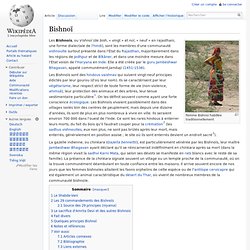

Féminisme. Actualité. Politique. The Economist. WHO will uphold the torch of openness in the West?

Not America’s next president. Donald Trump, the grievance-mongering Republican nominee, would build a wall on Mexico’s border and rip up trade agreements. Hillary Clinton, the probable winner on November 8th, would be much better on immigration, but she has renounced her former support for ambitious trade deals. 99 Reasons 2016 Was a Good Year – Future Crunch – Medium. “If it bleeds, it leads” isn’t a phrase coined by some cut-throat tabloid editor.

It’s a potent truth that lies at the heart of the modern day media machine. It’s time for some balance. That’s why our team at Future Crunch spent the year gathering good news stories you probably didn’t hear about, and sent them out in our fortnightly newsletter. Here’s our full list for 2016… Some of the biggest conservation successes in generation 1. 2. 3. This Breathtaking Video Reveals How Humanity Took Over The World. The Black Death.

The Second World War. The Industrial Revolution. The invention of modern medicine. Major events like these have had huge impacts on the world’s population of humans, which at the time of writing stands at 7,464,316,000 people. Considering that our species emerged from sub-Saharan Africa no more than 200,000 years ago, this is one hell of a jump. From the Mongol conquests to the arrival of Europeans in the New World, it reveals just how much of a difference major flashpoints in history had on our proliferation. We’d argue that the jump from 1 to 7 billion in the last 200 years is probably the most striking, and the planet’s population has only just begun to slow down ever so slightly.
The rise of humanity. Although birth rates are declining, death rates have plunged, and at the current rate, the global population is likely to peak at 11 billion by the end of the century. What's The Most Common Surname In Different Countries Across The World? Olivia Arthur a photographié l'Orient que l'Occident ne connaît pas. Jeddah, Arabie Saoudite, 2009.

Une tente qui sert de chambre. Magnum est de loin l’agence photo la plus connue au monde. L'année dernière, VICE et Magnum avaient entrepris un partenariat, grâce auquel nous avons eu l’occasion – en plus de publier sur VICE.com quelques-unes de leurs photos – d’interviewer plusieurs photographes de l’agence. En 2014, cette série d'interviews est de retour.
En 2012, les travaux d'Olivia Arthur sur les jeunes femmes d'Arabie Saoudite ont été publiés sous la forme d’un livre, Jeddah Diary. J'ai discuté avec elle des difficultés qu'elle a rencontrées lorsqu’elle a voulu contacter et travailler avec ces femmes et j'ai cherché à savoir si elle arrivait à dégager un thème général de ses travaux. VICE : Comment êtes-vous devenue photographe, après vos études de maths à Oxford ? Après avoir fini mes études, je suis partie en Inde. En quoi votre travail en Inde a-t-il influé sur vos travaux ? What Matters Most. Mer de Chine du Sud: des prétentions abusives des Chinois ? (...) #39, Antigua for beach in top beach destinations in the world. Bishnoï. Un article de Wikipédia, l'encyclopédie libre.

Femme Bishnoï habillée traditionnellement Les Bishnoïs sont des hindous vaishnav qui suivent vingt-neuf principes édictés par leur gourou (d'où leur nom). Ils se caractérisent par leur végétarisme, leur respect strict de toute forme de vie (non-violence, ahimsâ), leur protection des animaux et des arbres, leur tenue vestimentaire particulière[1]. On les définit souvent comme ayant une forte conscience écologique. Les Bishnoïs vivaient paisiblement dans des villages isolés loin des centres de peuplement, mais depuis une dizaine d'années, ils sont de plus en plus nombreux à vivre en ville. La gazelle indienne, ou chinkara (Gazella bennettii), est particulièrement vénérée par les Bishnoïs, leur maître Jambeshwar Bhagavan ayant déclaré qu'il se réincarnerait indéfiniment en chinkara après sa mort (dans la même région vivait la sadhvi Karni Mata, qui selon ses dévots se manifeste en rats blancs avec le reste de sa famille)
. « (1.) Images Of North Korea At Night. Aerial images of the Earth from space seem to wipe out most traces of humanity during the day, as our extensive cities and roadways are washed out by the landscape at that distance.

Nighttime is a different story. In the dark, city lights give an accurate representation of population density and socioeconomic conditions. Asia holds over 60% of the world’s total population, so it is not surprising that capital cities like Beijing, China and Seoul, South Korea are bright beacons of light. Though the vast expanses of light allow you to see cities and outlines of entire countries, it also makes it obvious that something is missing: North Korea. New images taken from the International Space Station help illustrate that point, as North Korea’s capital city of Pyongyang is a faint smudge of light in comparison to South Korea. North Korea has approximately 25 million citizens, which is more than Australia.
Frequency.